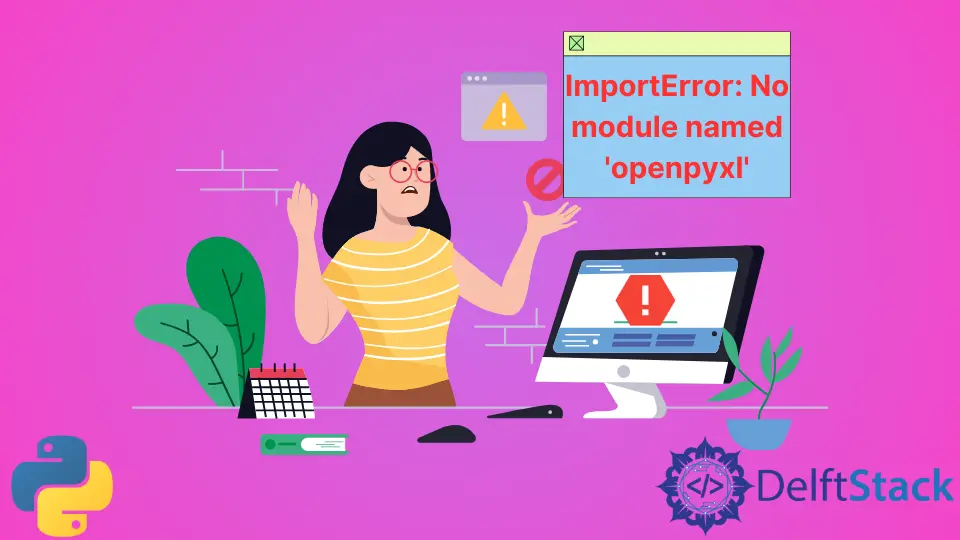How to Fix ModuleNotFoundError: No Module Named Openpyxl in Python
- Understanding the ModuleNotFoundError
- Method 1: Installing Openpyxl Using pip
- Method 2: Using a Virtual Environment
- Method 3: Verifying Python and pip Installation
- Conclusion
- FAQ

When working with Python, encountering errors can be frustrating, especially when they halt your progress. One common issue developers face is the “ModuleNotFoundError: No module named openpyxl.” This error typically arises when you attempt to import the Openpyxl library without it being installed in your Python environment. Openpyxl is a powerful library used for reading and writing Excel files, making it a valuable tool for data manipulation.
In this tutorial, we will explore the causes of this error and provide practical solutions to resolve it. By the end, you’ll be equipped with the knowledge to fix this error and continue your Python projects seamlessly.
Understanding the ModuleNotFoundError
Before diving into solutions, it’s essential to understand what the “ModuleNotFoundError” signifies. This error occurs when Python cannot locate the specified module—in this case, Openpyxl. It typically indicates that the library is not installed in your current Python environment. This can happen for several reasons, including:
- The library has not been installed yet.
- You are using a different Python environment where Openpyxl is not available.
- There are issues with your Python installation or environment configuration.
Method 1: Installing Openpyxl Using pip
The most straightforward way to resolve the “No module named openpyxl” error is by installing the library using pip, Python’s package installer. To do this, follow these steps:
- Open your terminal or command prompt.
- Type the following command:
pip install openpyxl
After executing this command, pip will download and install the Openpyxl library.
Output:
Collecting openpyxl
Downloading openpyxl-3.0.9-py2.py3-none-any.whl (242 kB)
|████████████████████████████████| 242 kB 1.4 MB/s
Installing collected packages: openpyxl
Successfully installed openpyxl-3.0.9
Once the installation is complete, you can verify it by running a simple import statement in your Python environment:
import openpyxl
If no error appears, congratulations! You’ve successfully installed Openpyxl. This method is the most common and effective way to resolve the “ModuleNotFoundError.”
Method 2: Using a Virtual Environment
Sometimes, the error may stem from working in a virtual environment that does not have Openpyxl installed. Virtual environments are a great way to manage dependencies for different projects separately. If you haven’t created a virtual environment yet, you can do so as follows:
- Navigate to your project directory in the terminal.
- Create a virtual environment using this command:
python -m venv myenv
- Activate the virtual environment:
- On Windows:
myenv\Scripts\activate
- On macOS/Linux:
source myenv/bin/activate
- Once activated, install Openpyxl within this environment:
pip install openpyxl
Output:
Collecting openpyxl
Downloading openpyxl-3.0.9-py2.py3-none-any.whl (242 kB)
|████████████████████████████████| 242 kB 1.4 MB/s
Installing collected packages: openpyxl
Successfully installed openpyxl-3.0.9
After installation, you can check if the library is available by running:
import openpyxl
Using a virtual environment not only helps you manage dependencies better but also prevents conflicts between different projects. If you encounter the “No module named openpyxl” error, this method is a reliable solution.
Method 3: Verifying Python and pip Installation
In some cases, the error may arise due to issues with your Python installation or pip configuration. It’s essential to ensure that both Python and pip are correctly installed and configured. You can verify your installations by running the following commands:
- Check your Python version:
python --version
Output:
Python 3.8.5
- Check your pip version:
pip --version
Output:
pip 20.1.1 from /usr/local/lib/python3.8/site-packages/pip (python 3.8)
If either command fails or returns an error, you may need to reinstall Python or pip. To reinstall pip, you can use the following command:
python -m ensurepip --upgrade
Output:
Looking in links: /tmp/tmp5t1y3g0g
Collecting pip
Downloading pip-20.1.1-py2.py3-none-any.whl (1.5 MB)
|████████████████████████████████| 1.5 MB 1.4 MB/s
Installing collected packages: pip
Successfully installed pip-20.1.1
After reinstalling, try installing Openpyxl again using the pip command. Ensuring that your Python and pip installations are up to date can often resolve issues related to missing modules.
Conclusion
Encountering the “ModuleNotFoundError: No module named openpyxl” error can be a common hurdle for Python developers. However, by following the methods outlined in this tutorial, you can effectively resolve this issue and continue your work with Excel files in Python. Whether you choose to install Openpyxl directly, use a virtual environment, or verify your Python and pip installations, each method provides a clear path to success. Remember, understanding the root cause of the error is key to preventing it in the future.
FAQ
-
What is Openpyxl used for?
Openpyxl is a Python library used for reading and writing Excel files, allowing for data manipulation and analysis. -
Can I use Openpyxl with Python 2?
Openpyxl supports Python 3.6 and above. It is not compatible with Python 2. -
What should I do if pip is not recognized?
Ensure that Python and pip are correctly installed and added to your system’s PATH environment variable. -
Is there an alternative to Openpyxl?
Yes, other libraries such as Pandas and xlrd can also be used for working with Excel files in Python. -
How can I update Openpyxl to the latest version?
You can update Openpyxl using pip with the commandpip install --upgrade openpyxl.
I am Fariba Laiq from Pakistan. An android app developer, technical content writer, and coding instructor. Writing has always been one of my passions. I love to learn, implement and convey my knowledge to others.
LinkedInRelated Article - Python Error
- Can Only Concatenate List (Not Int) to List in Python
- How to Fix Value Error Need More Than One Value to Unpack in Python
- How to Fix ValueError Arrays Must All Be the Same Length in Python
- Invalid Syntax in Python
- How to Fix the TypeError: Object of Type 'Int64' Is Not JSON Serializable
- How to Fix the TypeError: 'float' Object Cannot Be Interpreted as an Integer in Python
